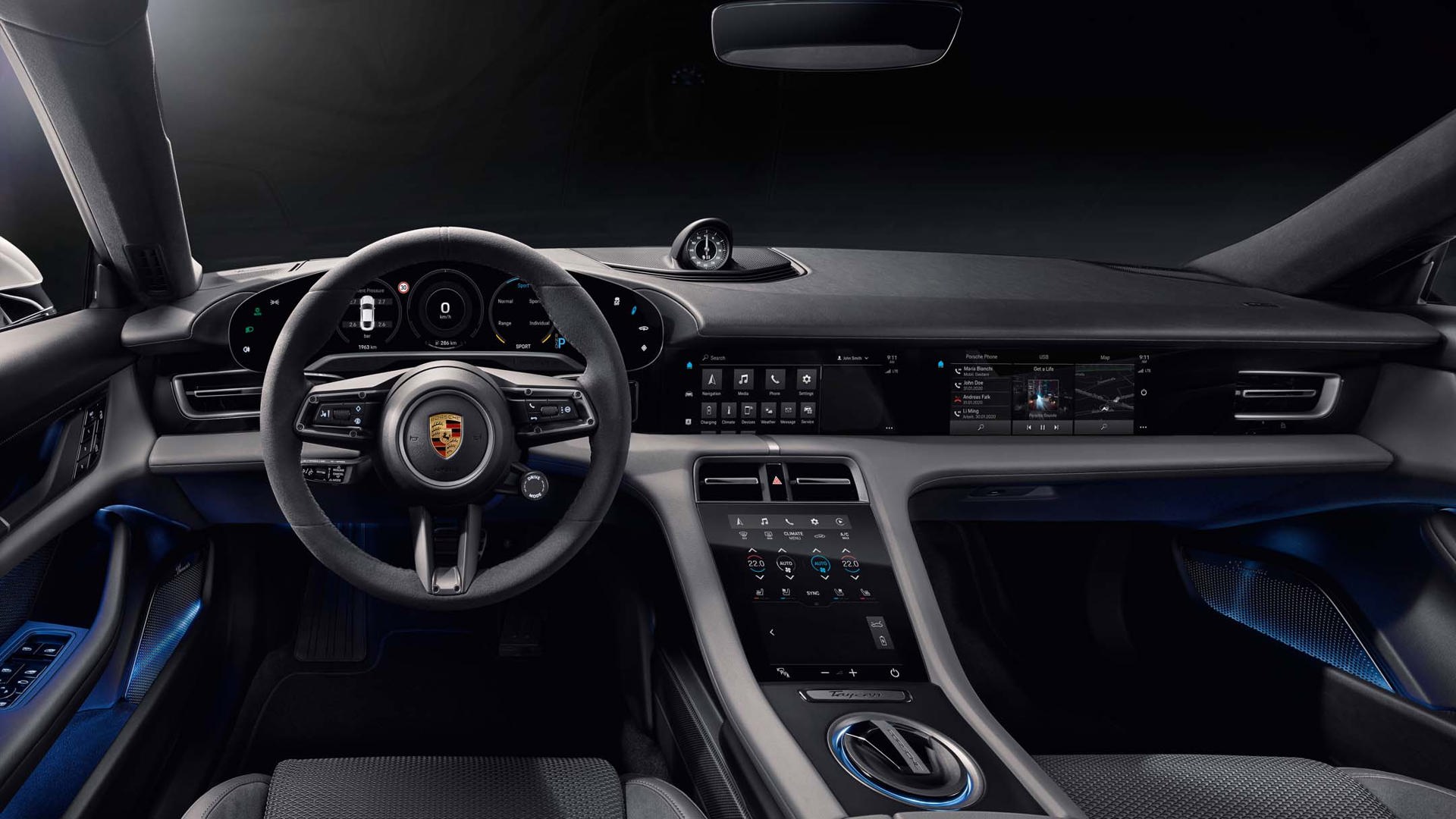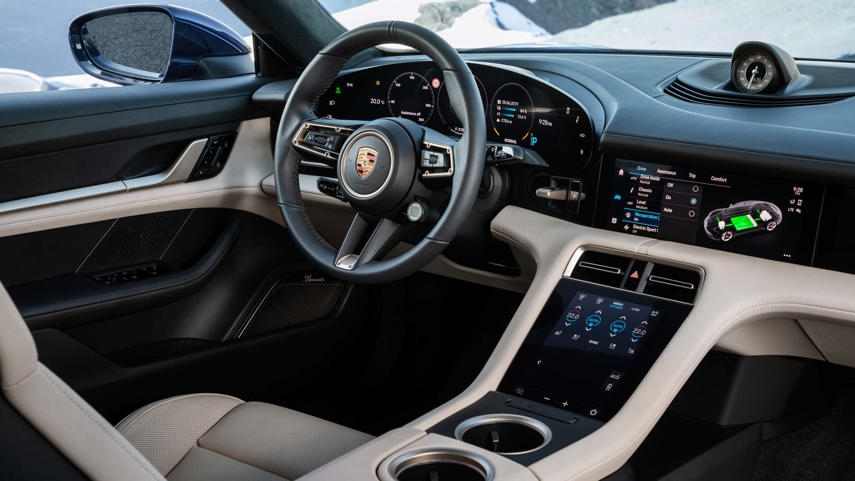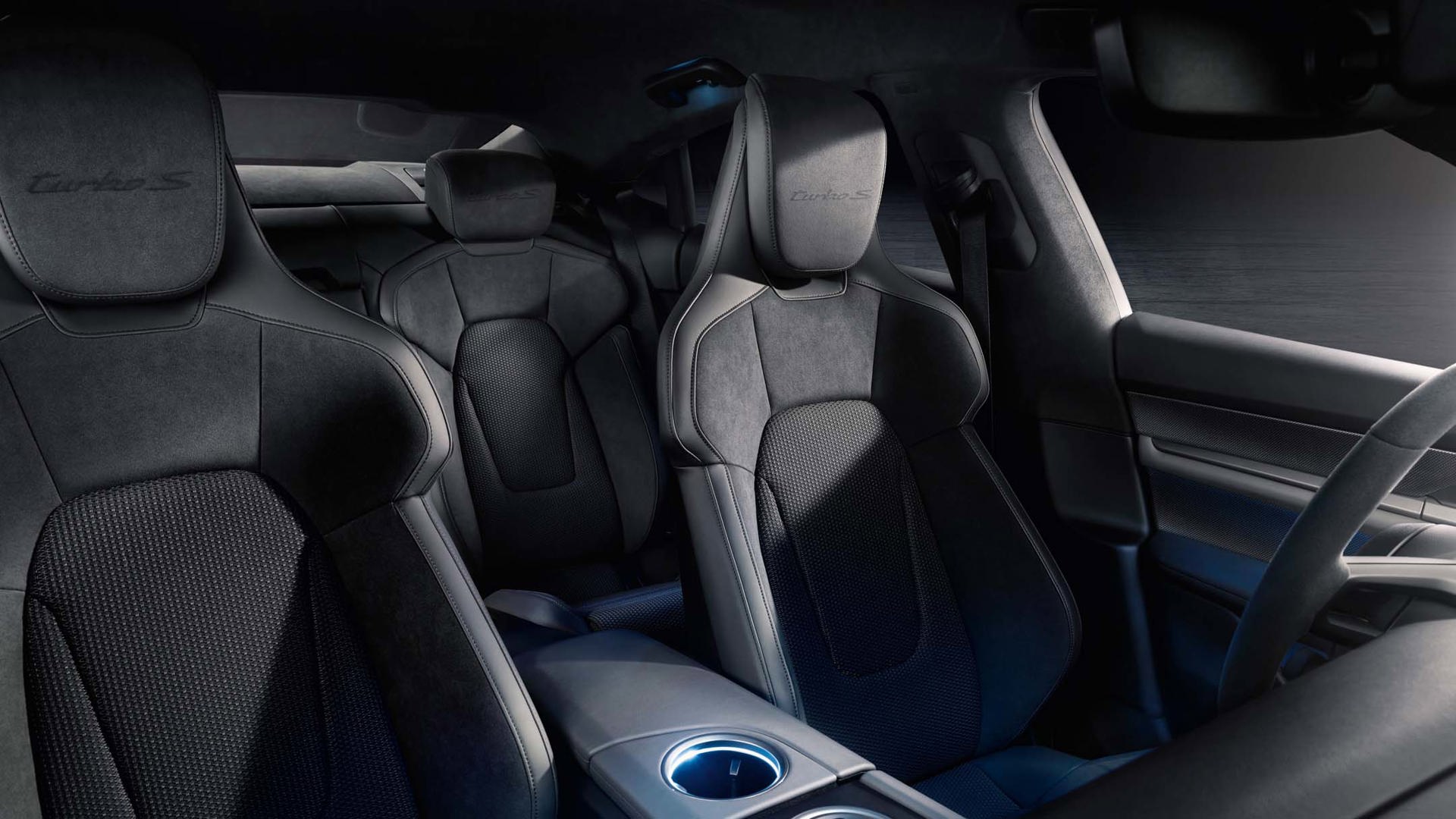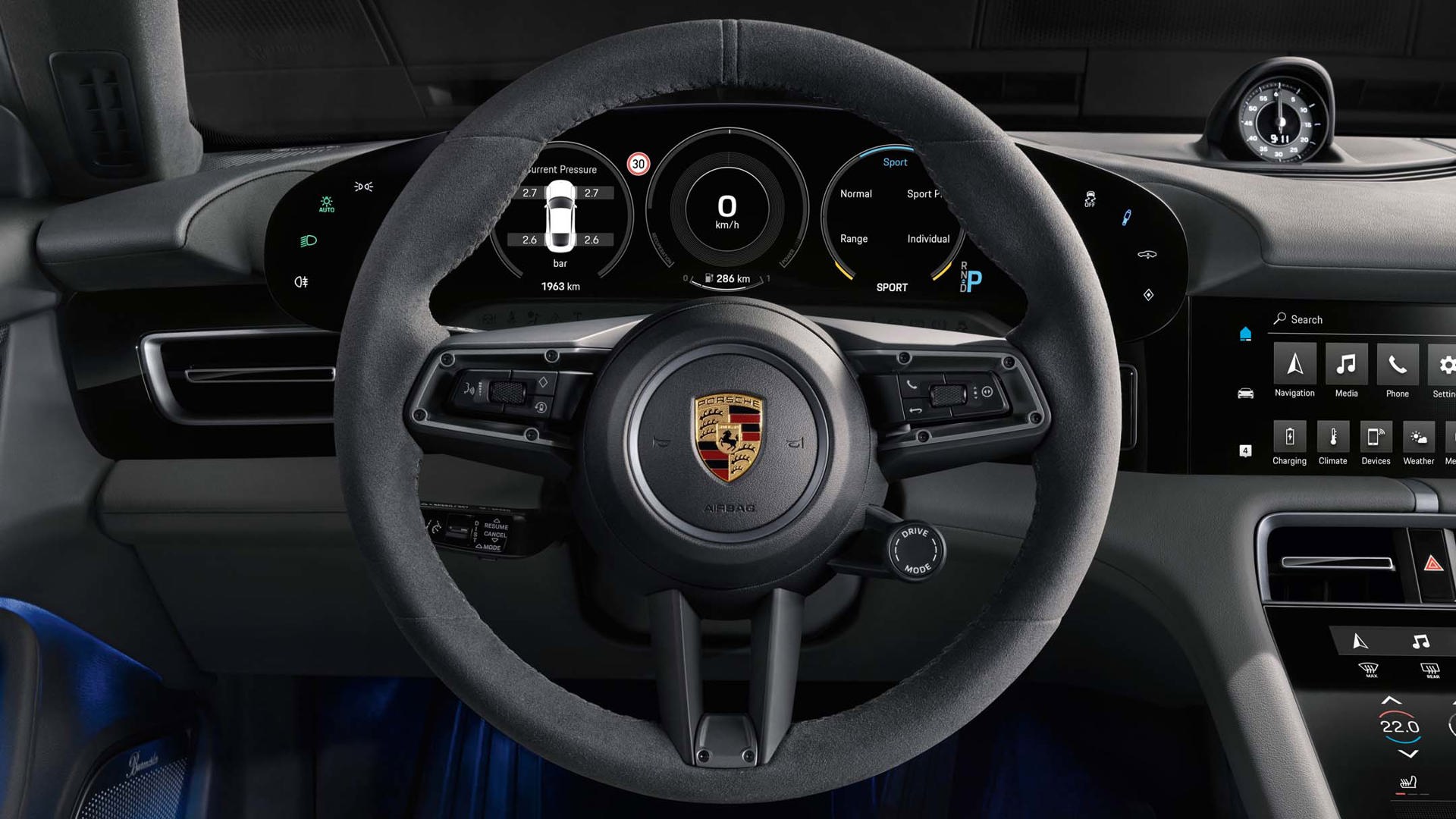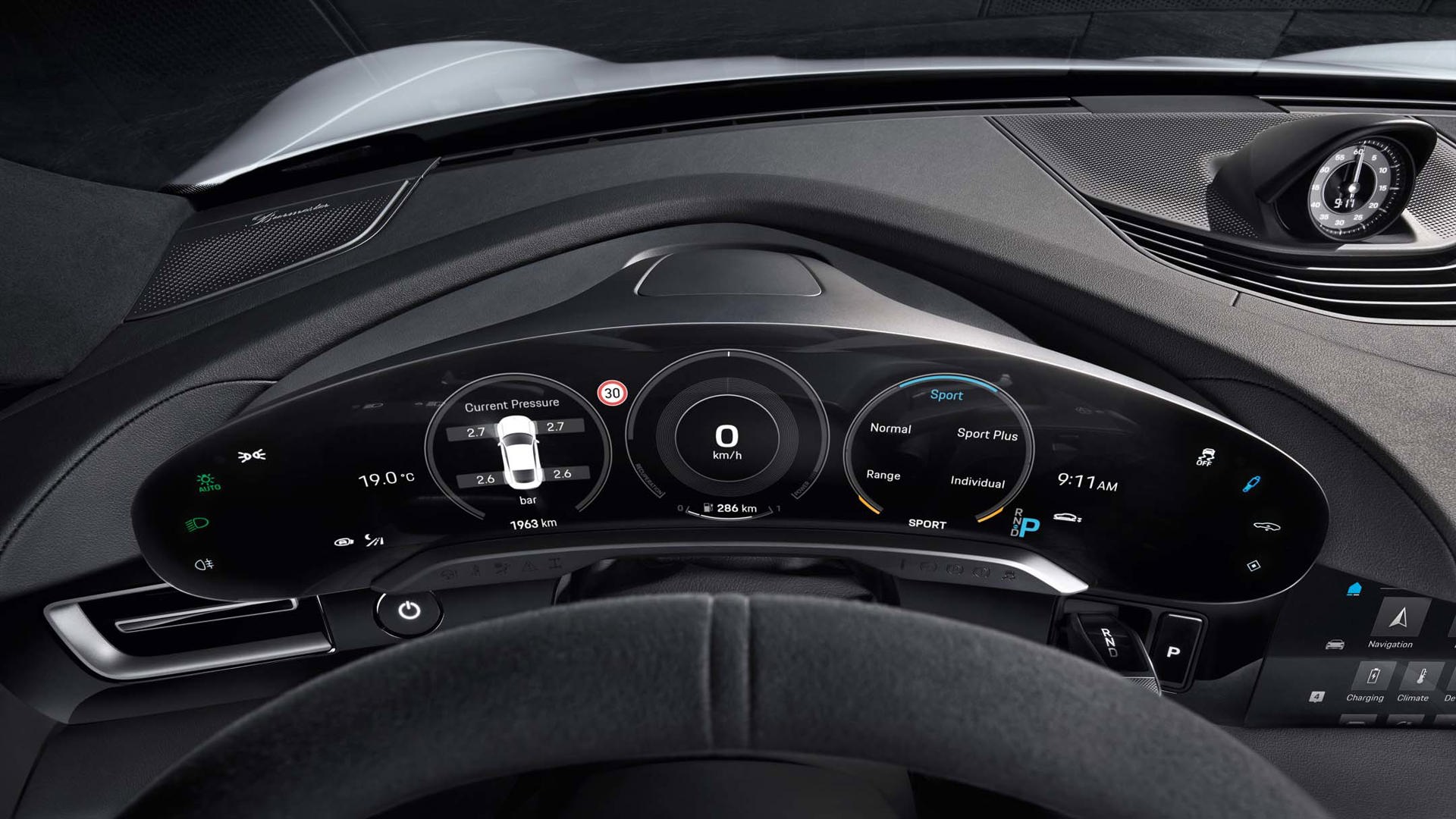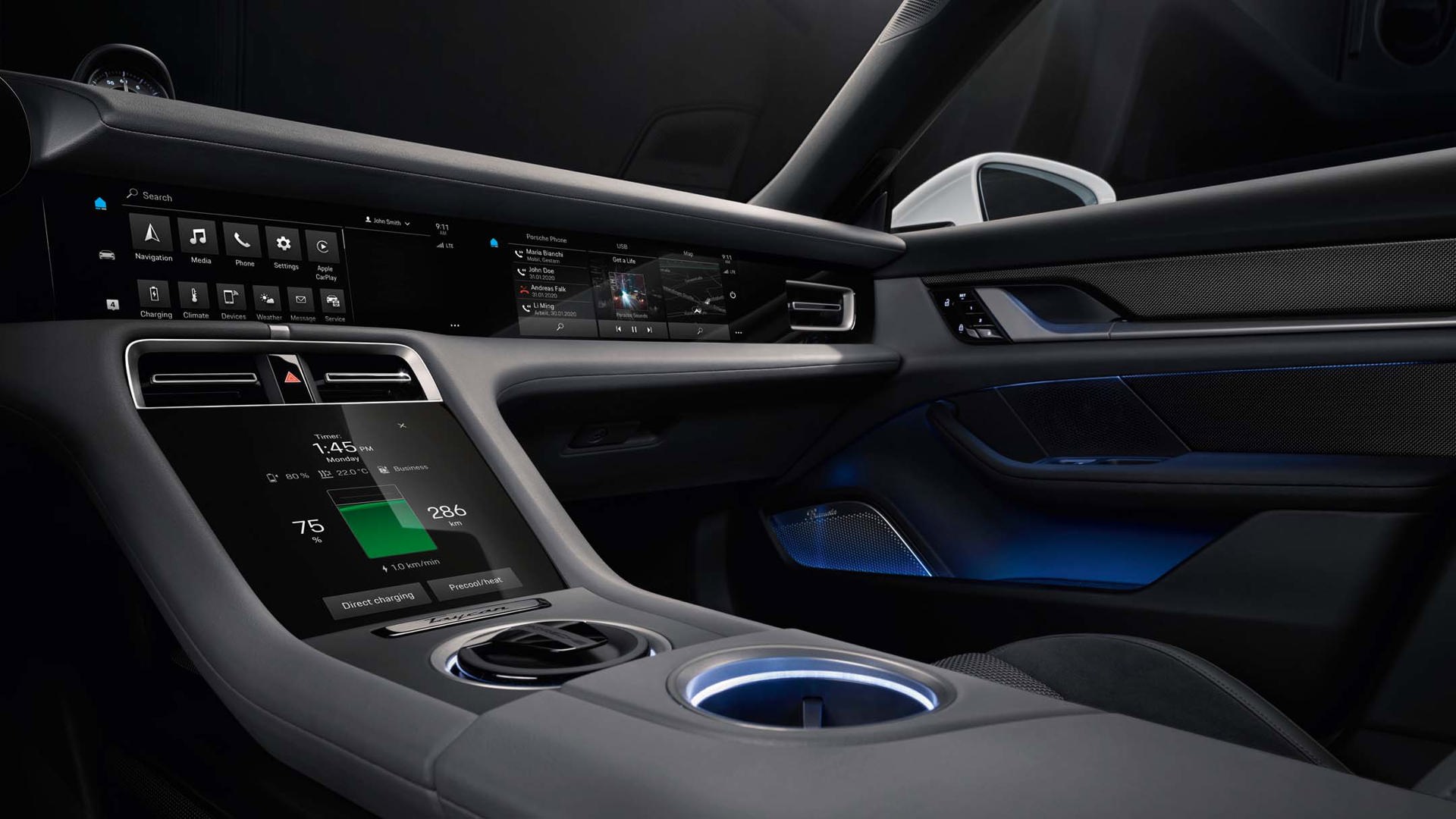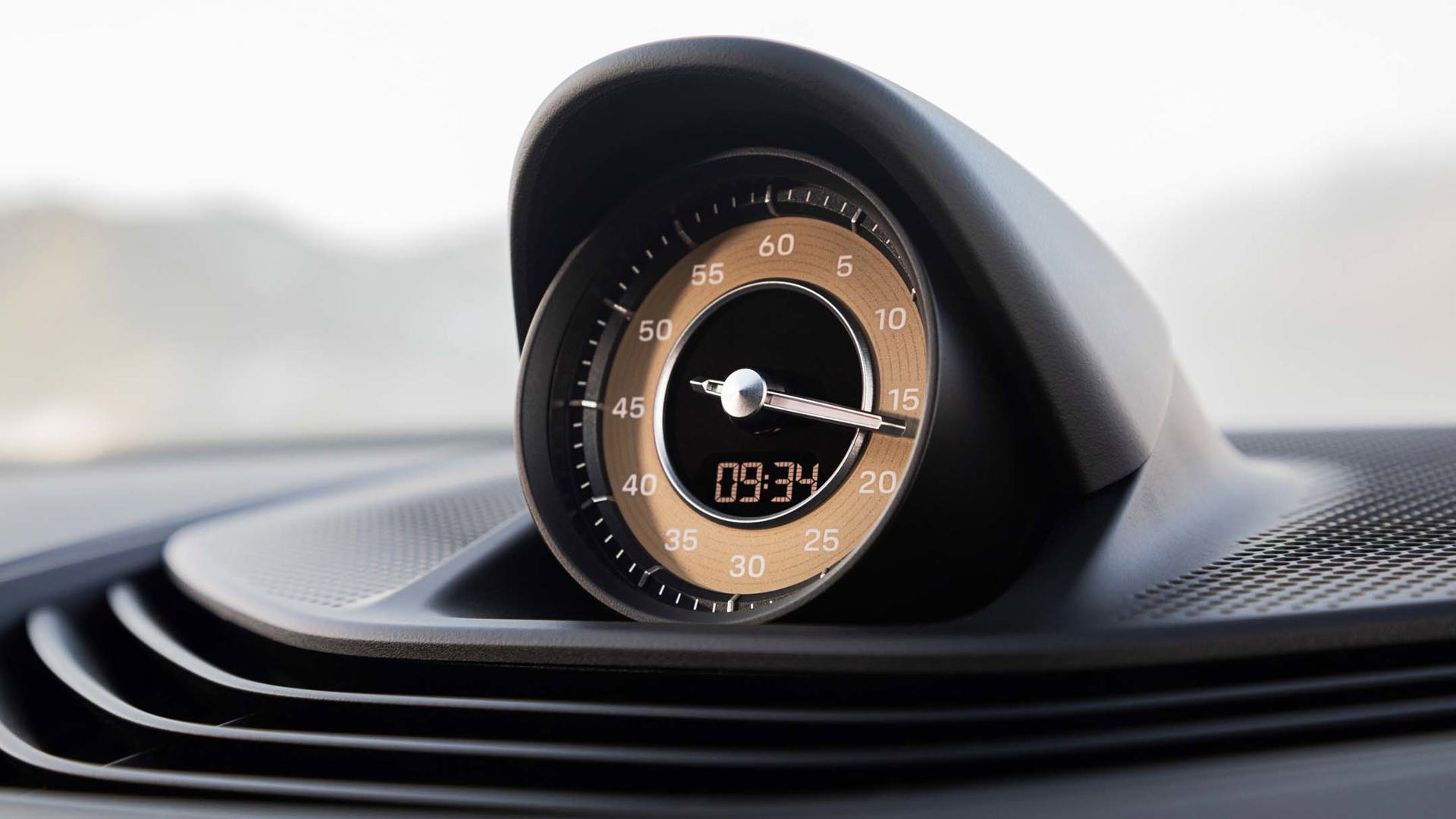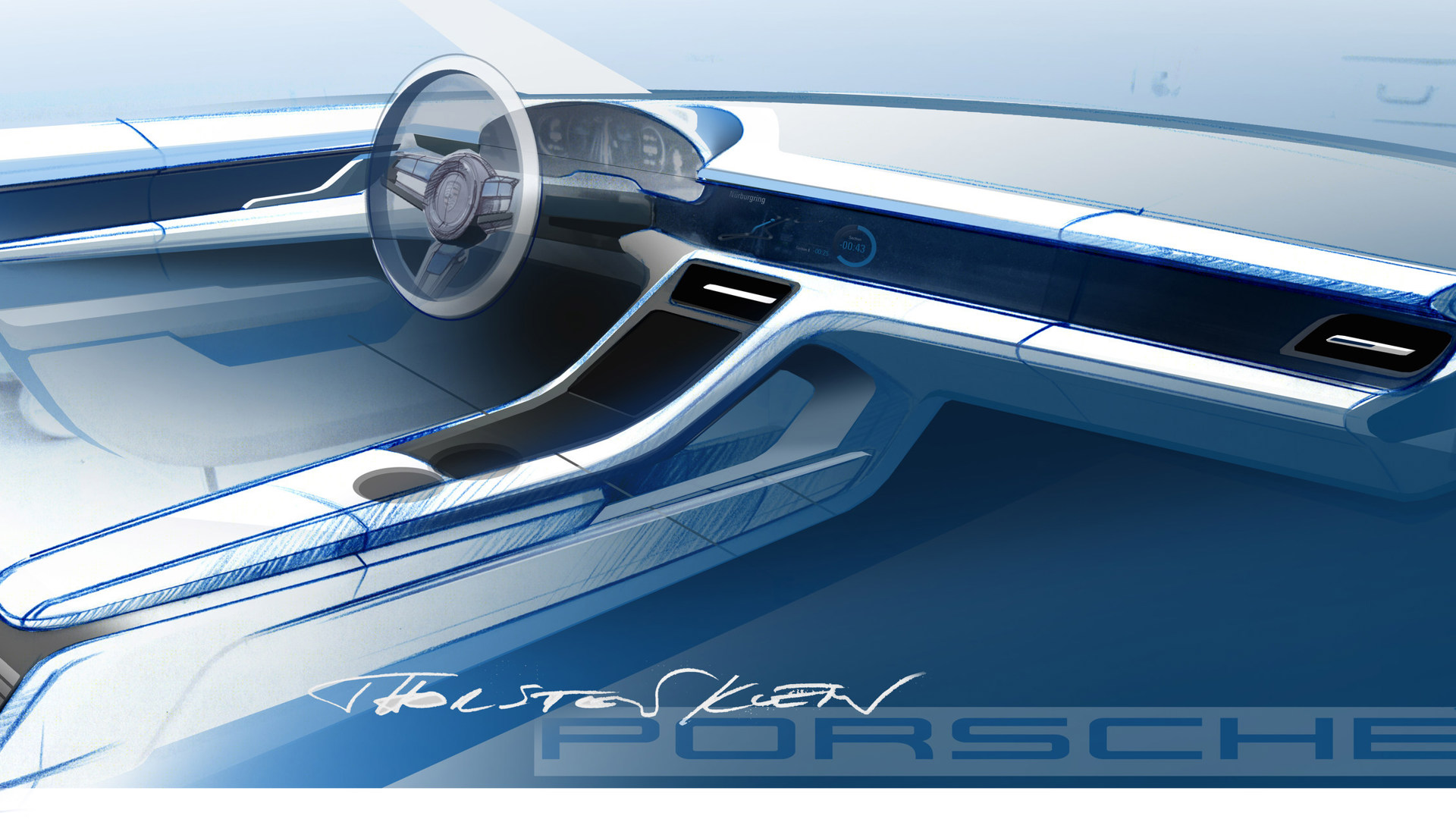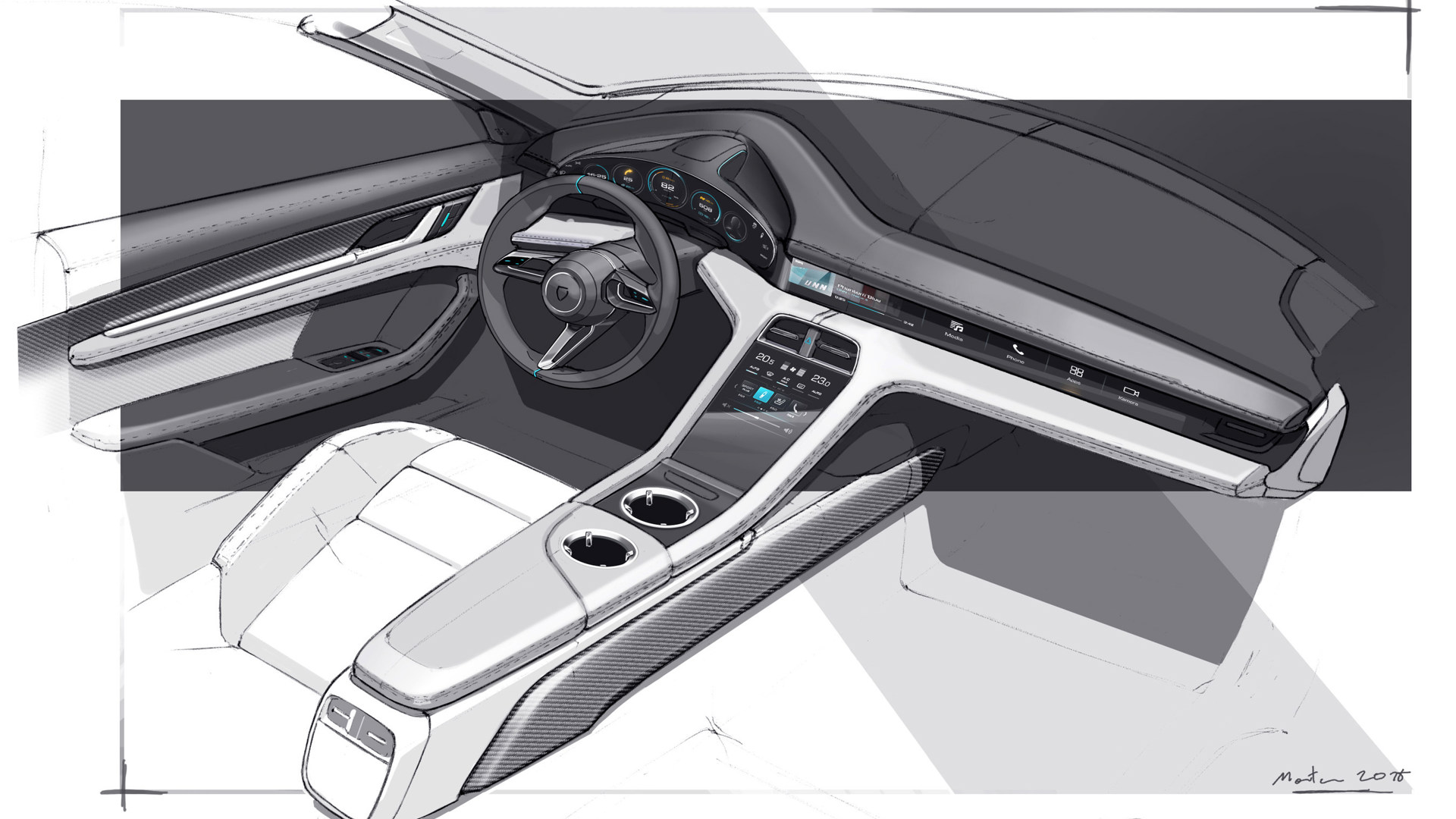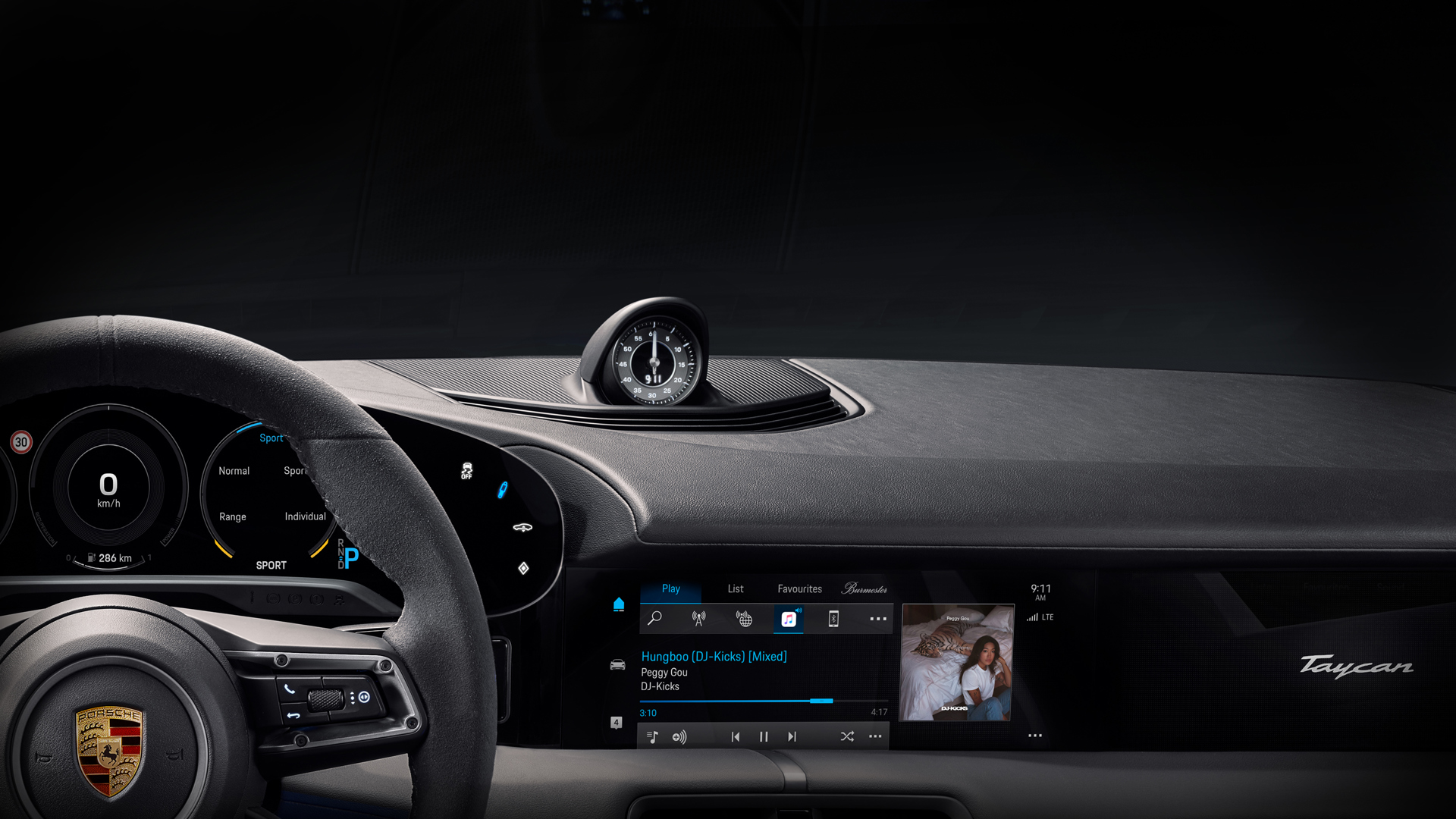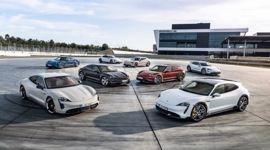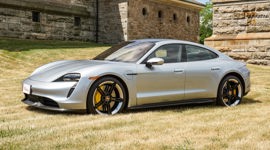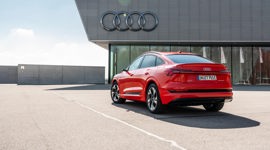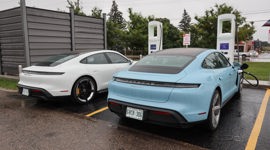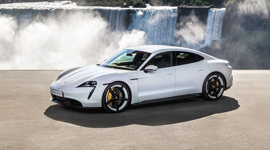How does a company with decades of iconic styling design a model that’s a revolution, while keeping ties with the past? That’s the challenge presented to the designers of Porsche’s first electric car. The 911 dashboard is nearly as much a part of the company as the outer silhouette. But an electric car, especially your first full shot at an electric, needs to be high tech. Very high tech. Here is a look at the inside of the all-new Porsche Taycan.
It starts with the classic 911 shape for the instrument panel. But instead of a series of binnacles like the automaker is known for, this is one massive screen. It spans nearly the full width of the dash and it’s even curved. At 16.8 inches wide, this thing is huge. Of course, the frameless screen is also very configurable. Want a digital speedo and power gauge in place of the traditional tach in the middle and speedo gauge on the left? Sure, you can do that. Or you can make the entire screen a map. Or just the middle a map and the audio display on the side. You can do a lot with it – even a Saab-like night mode that only shows you a few key details while darkening the rest.
Then there are the straight lines running from the edge of the cluster to the doors. Very 911. Below that, the rising centre console is designed to make it look like you’re sitting lower in the car, a more sporting driving position in the sedan. Immediately to the right of the steering wheel is another screen – 10.9 inches. This one is the primary infotainment screen, but can be divided into three split-screen panels if you want – such as map, audio, phone. It is, again, largely customizable. The map, like on all the screens, is permanently in what we’d call dark mode, with a black background instead of white. Because it looks better and integrates better into the dash.
Quick-access buttons take you to the home screen, car screen, and notification centre. There is Apple Music integration – Porsche says it’s the first “full integration” into a vehicle and drivers get Porsche-curated playlists. There is also Apple CarPlay support. Why all the Apple content? Porsche said about 80 percent of its customer base has iPhones.
Surrounding that centre screen are two more screens. The passenger gets an optional 10.9-inch display that matches the centre one. It can do nearly everything the centre screen can – so the passenger can be in control. Want your navigator to pick a destination? They can use the on-screen keyboard on their own screen – which you can’t do on the centre one (like in most vehicles). The passenger can then help you navigate using satellite views, or find, for example, a charge point en route. They can also set the radio or control the phone. Porsche’s proud to point out that all three screens on the dash can show different maps at the same time. Just one route, though.
There are a few things the passenger screen can’t do. It can’t change vehicle settings, for one. No sudden Sport Plus mode from over there. And it doesn’t have access to the notifications centre, where your phone alerts are stored. So that the passenger has limited access to the driver’s phone contents.
We (and Porsche) know what you’re thinking about the keyboard access, though: If there’s no passenger, that functionality goes away. Safety, and all that.
This system uses voice control, with the increasingly common “Hey Porsche” commands on offer. No jokes from this one, though. Porsche says it’s very serious, and that’s not their thing. You can control virtually anything in the vehicle with voice, they said in the presentation, but nothing safety-related. The automaker refers to the system as “driver experience” instead of the conventional user experience, because, of course, they expect you to be driving this car.
Below the centre display is the HVAC controller. Again, another display, this one 8.4 inches, it handles just ventilation on the top. The bottom half is a trackpad-like touchpad screen with haptic feedback and handwriting recognition, to add yet another way to control the system. If you get the optional four-zone climate control there’s another 5.4-inch screen for rear-seat passengers to operate it. No maps on that one.
While other recent Porsche interiors turned the transmission tunnel into a flurry of buttons for all the various control modes, the Taycan moves most of those to the instrument cluster. No centre console buttons, and no looking down to press them. Instead, they’re probably reachable with a long finger from the steering wheel, and there are two commodious cup holders and an opening centre console.
Back to the design, the standard interior will come in all black. What Porsche calls “Stealthy”. That base trim gets dark silver accents as an option. There’s also a paldao wood interior with “Neodyme” accents – a reference to the magnets in the electric motor, and the bronze-ish finish evokes modern electronics and vintage craftsmanship at the same time. There is a naturally tanned leather available that Porsche claims is more sustainable, but there’s also a new Racetex interior that is leather-free. It’s a new material for Porsche that the designers say answers the strong EV-market demand for premium non-hide interiors. The carpet is made partially with recycled plastics as well.
The vents are fixed, or at least the parts you can see. But in the controls, you can set them to blow air at you or in a direction of your choice, or have it more diffuse and breeze-free. The moving bits are behind the scenes. Driver and passenger don’t need to share that setting, either, so you can have a tornado on one side and a gentle caress of temperature on the other.
Look at this interior, and it screams Porsche. But then you look at the company’s other cockpits, even the latest 911, and the Taycan actually has very few specific elements that look like the cars that came before. Which says that Porsche hit its target. A car for the future that evokes the company’s past.
